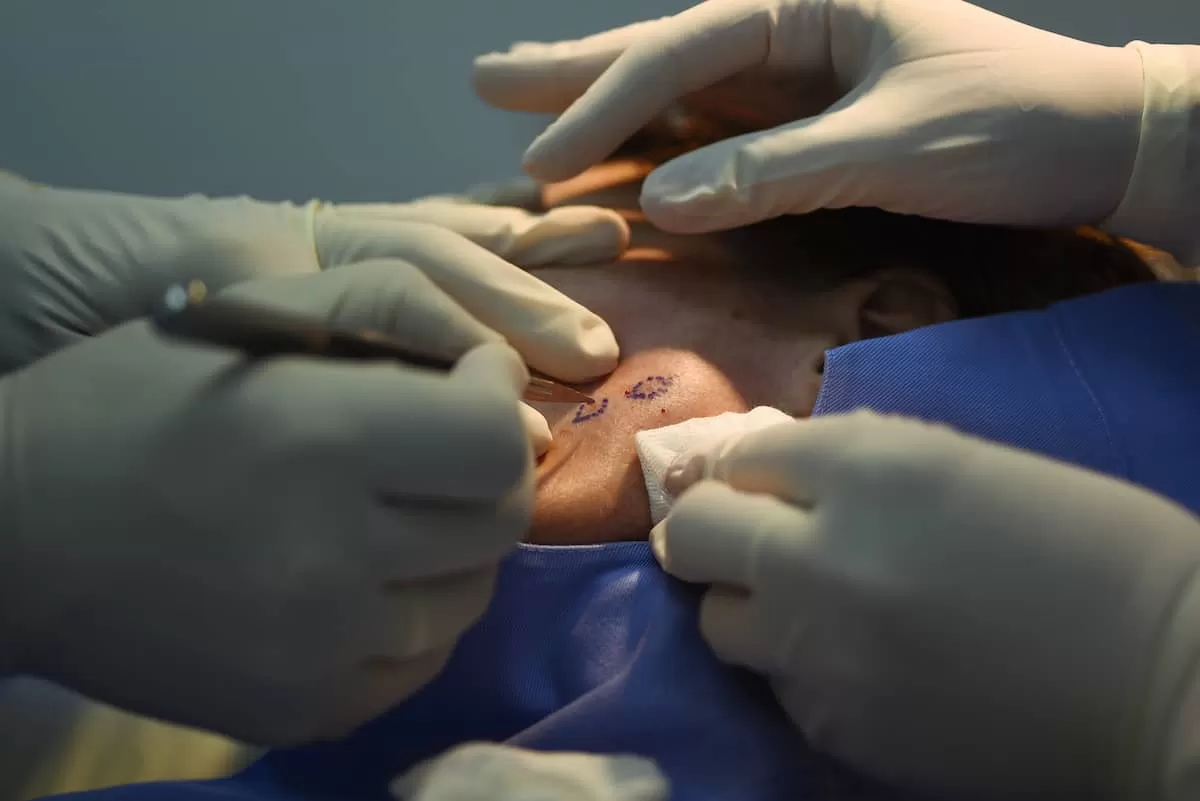Scabies – what are the symptoms and what does the treatment look like? Although many people think scabies is a disease of the past, it’s not true. Scabies is still present, so in daily practice dermatologists encounter children and adults who are infested with scabies. Global statistics indicate that each year about 300 million people visit a doctor for scabies.
This disease is caused by a tiny burrowing mite called Sarcoptes scabiei, which lives on the skin. The mite cannot survive more than 2-3 days away from human skin, so it is usually transmitted by direct skin-to-skin contact with the infested person. Sometimes, it can be spread by contact with items such as bedding and clothes, but hotel blankets are particularly risky.
Although it is often seen as a sign of poverty and disadvantage; the socio-economic status is not a significant factor. Very often, people who travel, even though they stay in more expensive hotels, can become infested with scabies. It is a misconception that inadequate hygiene has to do with infestation. It is also possible to get scabies from a blanket, used previously by someone with scabies. Nevertheless, scabies norvegica (Norwegian scabies) is the most common disease in homeless people and therefore it is often related to poor hygiene. But that’s not true.
Scabies – Symptoms

The first symptom of scabies is itching on the whole body, without any manifestation on the skin. The itch is especially intense at night when one relaxes and warms up. When this symptom appears, the scabies is first suspected and an adequate therapy is given, even though there are no visible signs on the skin. If the treatment is not timely administered, after two weeks, small scabs begin to develop, usually in the skin folds. At first, the scabs look like someone has exclusively scratched the skin, or like tiny pimples. They are often mixed up with eczema, in which case corticosteroid therapy can camouflage scabies and allow the mites to make more tunnels in the skin to lay their eggs. The disease will progress further by forming nodules. They most often appear in the skin folds where it is warm: between the fingers, in the armpits, in the groin, on the genitals and on testicles in men. Nodules can be the size of marbles, and after they appear, people go to see a dermatologist.
Scabies – Treatment
The scabies treatment is simple – special creams need to be applied from the jaw area to the feet covering every possible millimeter of the body. In adults, the creams are not applied to the face or the scalp. In babies, scabies can also appear on the face. It is not uncommon for babies to have scabies, and even get infested in the hospital.
Typically, the treatment lasts for two weeks – the cream is applied over the whole body and then repeated after seven days. The cream needs to be applied for the second time in order to remove mites that have hatched from the eggs in the meantime. Some patients may require for the therapy to be repeated one more time. It is not uncommon for the itching to persist for some time after the therapy, as a result of the organism’s immune response.
If left untreated, bacterial infections may develop in areas where scabs have been excessively scratched.
Psychological problems may also occur as a result of the unbearable itch.
Scabies – prevention and transmission
The scabies can be transmitted by direct skin-to-skin contact, but only if it has not been treated for a long time. It is usually transmitted by sharing the bed with an infested person.
It is important to note that all household members, that is, all those who have been in direct contact with a person who has scabies, must undergo the therapy even though they do not show any symptoms, because the first symptoms do not appear until after a month. Also, it is mandatory to wash clothes in hot water. Those that cannot be washed in hot water should be left isolated for at least seven days.




